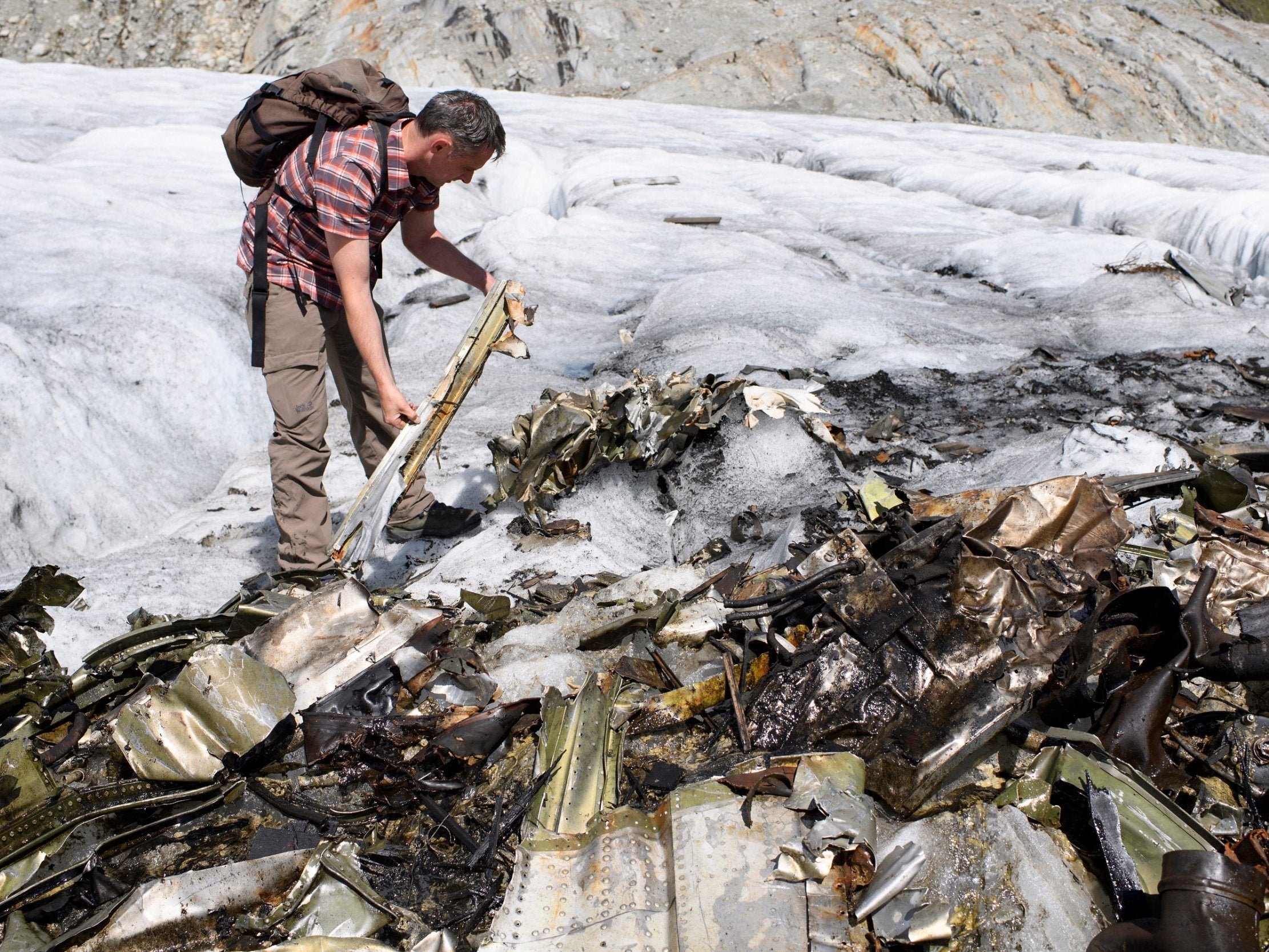Heatwave uncovers Second World War plane hidden in glacier for 72 years
US military transport aircraft crash landed in Alps in 1946

Your support helps us to tell the story
From reproductive rights to climate change to Big Tech, The Independent is on the ground when the story is developing. Whether it's investigating the financials of Elon Musk's pro-Trump PAC or producing our latest documentary, 'The A Word', which shines a light on the American women fighting for reproductive rights, we know how important it is to parse out the facts from the messaging.
At such a critical moment in US history, we need reporters on the ground. Your donation allows us to keep sending journalists to speak to both sides of the story.
The Independent is trusted by Americans across the entire political spectrum. And unlike many other quality news outlets, we choose not to lock Americans out of our reporting and analysis with paywalls. We believe quality journalism should be available to everyone, paid for by those who can afford it.
Your support makes all the difference.A heatwave in Switzerland has uncovered a Second World War plane that was frozen inside a glacier for the past 72 years.
The US military transport aircraft was flying from Austria to Italy in the winter of 1946 when a snowstorm forced it to crash land onto the Gauli Glacier in the Bernese Alps.
All 12 people onboard were rescued five days later by Swiss soldiers alerted to the accident by a radio message. The C-53 Skytrooper, also known as a Dakota, was never recovered, eventually being buried by decades worth of layers of snow and ice.
But experts have for the first time been able to recover much of the plane following unusually warm weather in the alpine country.
Temperatures have soared above 35C in recent weeks, matching much of Europe’s unprecedented summer heatwave. It is one of Switzerland’s hottest and driest summers since records began in 1864.
Among the items discovered inside the plane were tin cans, hangers and spoons.
An owner of a local mountain hut who was asked to watch over the site to prevent looting described the wreck as a “great folktale”.
“We have many visitors coming to us solely for the sake of the Dakota,” he told The Telegraph.
Scientists warn the dramatic melting of the world’s mountain glaciers is mostly the result of manmade climate change, rather than natural variabilities in the earth’s temperature.
A 2014 assessment of about 200,000 glaciers, some of which have been monitored since the mid-19th century, found about two-thirds of the current rate of glacial melting is due to human influences on the climate.
Join our commenting forum
Join thought-provoking conversations, follow other Independent readers and see their replies
Comments